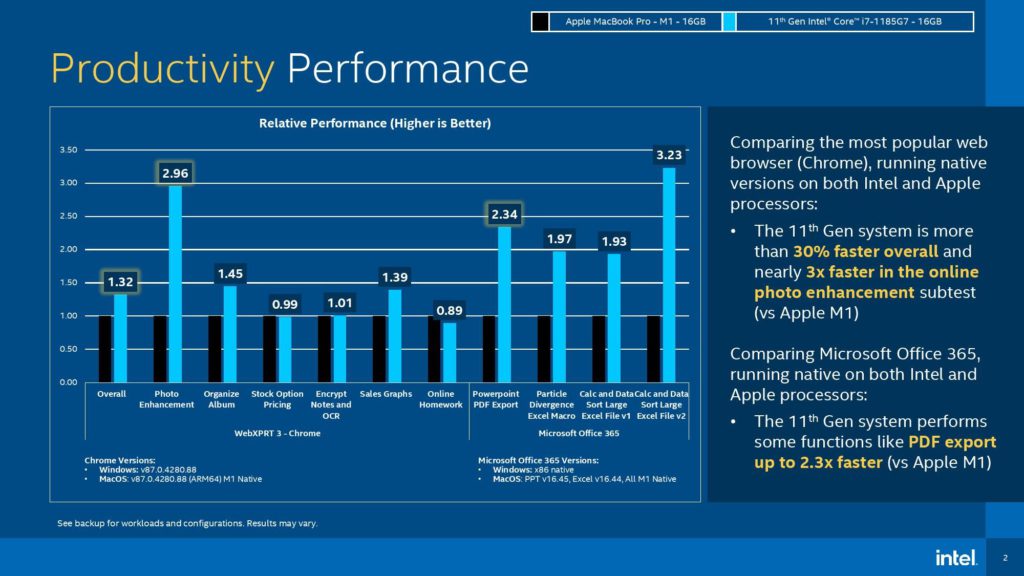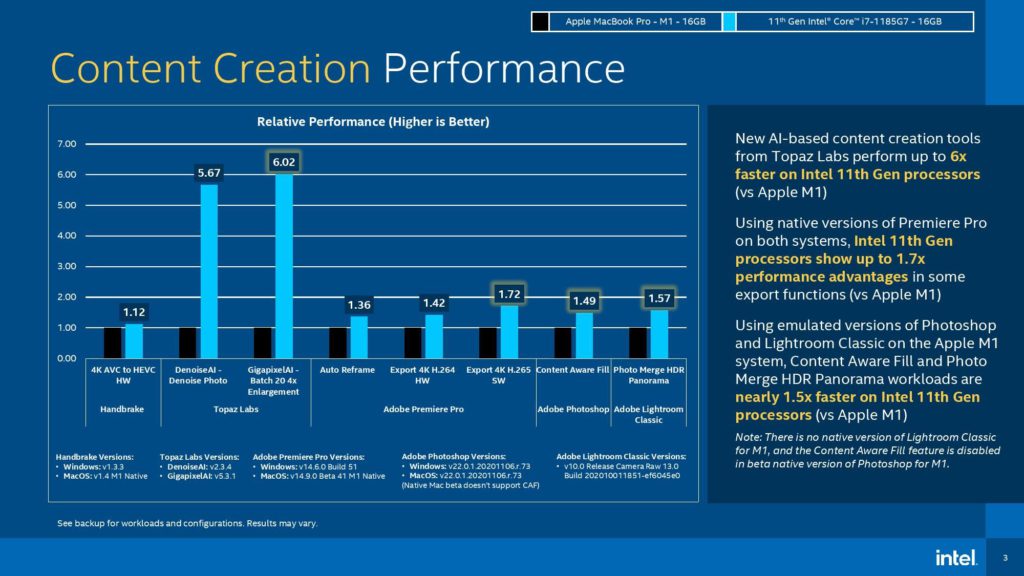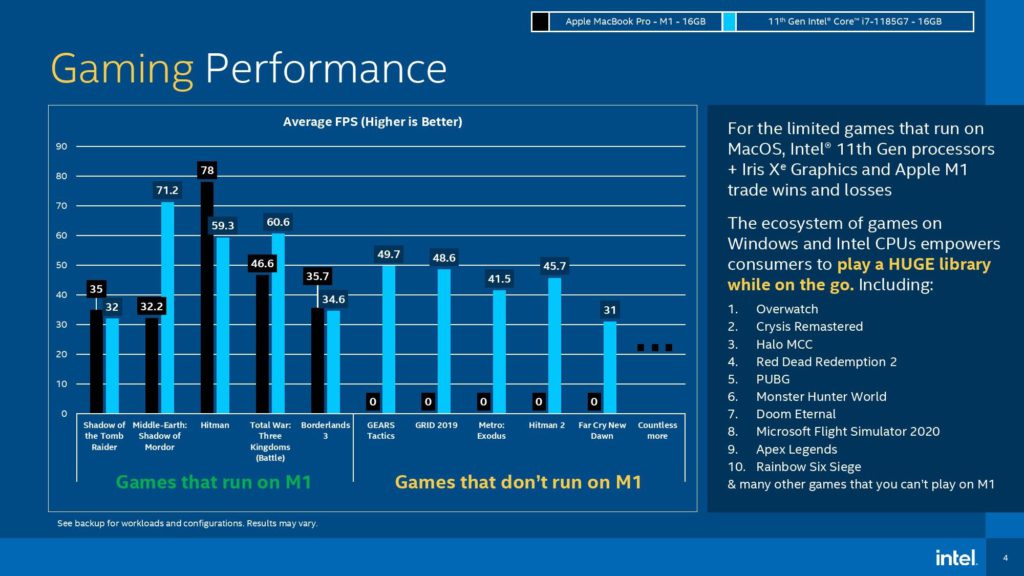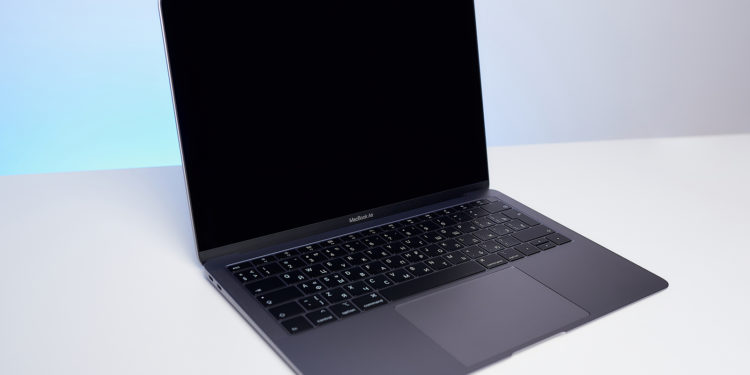Chipmaker Intel has claimed that its processors are still better than Apple's M1, making comparisons that are largely questionable.
Apple Silicon devices were released into the wild in November 2020. Mac buyers were won over by the M1's performance improvements over previous Intel chips. However, the established processor maker remains at pains to explain that its own products are still superior in real-world use. In presentation slides obtained by Tom's Hardware published However, the claims compared to comparable hardware are questionable in some cases.
Against Apple M1: Intel's testing procedures are hardly used anymore
The slides compare a 13-inch MacBook Pro with M1 and 16 gigabytes of RAM to the company's own white box, which includes the Core i7-1185G7 with four cores, eight threads, and a maximum clock speed of 4.8 GHz—accompanied by 16 GB of RAM. The figures generally seem to show that Intel's chip is either comparable or superior to the M1 in various tasks, but with heavy caveats. First of all, the benchmarks use Intel's "real-world usage guideline" tests, a collection of procedures that don't seem to be actively followed by most other testers. This includes running various tests using WebXPRT 3 in Chrome, Microsoft Office 365, and AI-based tools from Topaz Labs. There are also benchmarks that use more commonly used tools, including HandBrake and Adobe Creative Cloud applications. But the data originally presented comes from tests that are little to not used today.

Intel makes strange claims
The results, according to Intel, show that compared to the M1, the chip is "over 30% faster overall, scoring nearly 3x faster in the online photo editing test," while "some features like PDF export" in Office 365 "are up to 2.3x faster." Intel's Handbrake tests also appear to forego hardware-based transcoding entirely on the M1, while it uses Intel's QuickSync hardware routines for the Windows tests. Despite Apple's focus on machine learning support in the M1, Intel is trying to hit back with the odd claim that its chip is 6x faster than the Apple M1 in the Topaz Labs tests. In the Premiere tests, Intel was reportedly 1.7x faster, while the Photoshop and Lightroom Classic tests, which relied on Rosetta 2 translation for compatibility, resulted in "nearly 1.5x faster" speeds on Intel.

Intel vs. Apple M1: Gaming performance was also commented on
Oddly enough, Intel shows a wider range of results when it comes to gaming performance, including Hitman running better on the M1 than its own chip while showcasing comparable or better Intel performance on other titles like Borderlands 3 and Shadow of the Tomb Raider. Even stranger, though, is that Intel takes the time to point out that there is a library of games that "don't run on the M1," including Hitman 2, Metro: Exodus, GRID 2019, and "countless more." The chipmaker also claimed that the M1 failed eight of 25 tests it uses to represent a "day in the life" for its Evo processor upgrade. These failures included relatively simple tasks, like "Switch to calendar in Outlook" and "Start video conference" in Zoom, which are things that are also easily accomplished on an M1 Mac.

Against Apple M1: Intel uses obscure testing procedures
There was also a counter-argument regarding battery performance. According to Apple, the MacBook Air can achieve around 18 hours of battery life. However, Intel achieved 10 hours and 6 minutes - under various test conditions. For example, a "Netflix stream and various tabs" were used in Safari. Intel claims that the battery life of 10 hours and 6 minutes is in the same range as an Acer Swift 5 with the Core i7-1165G7, which performs the same task with Chrome. In addition, Apple's pricing policy and form factor were also criticized, among other things. Overall, Intel's publication shows that the company is striving to present itself in a better light than Apple. Cherry-picking specific test results and using obscure test procedures at least proves this. (Photo by tyukin.photo / Bigstockphoto)





